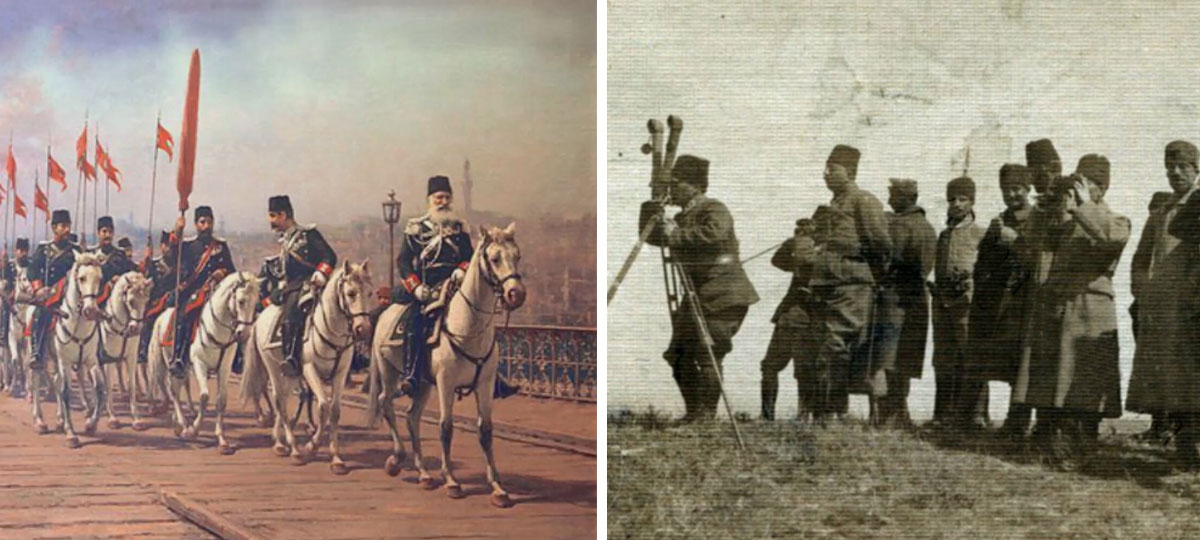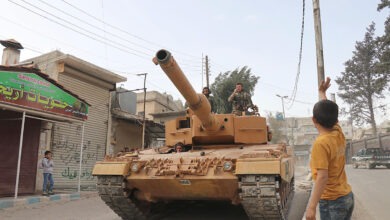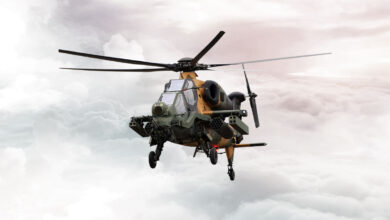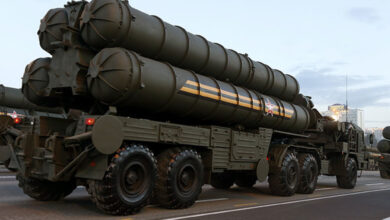Ottoman and Turkish Military History
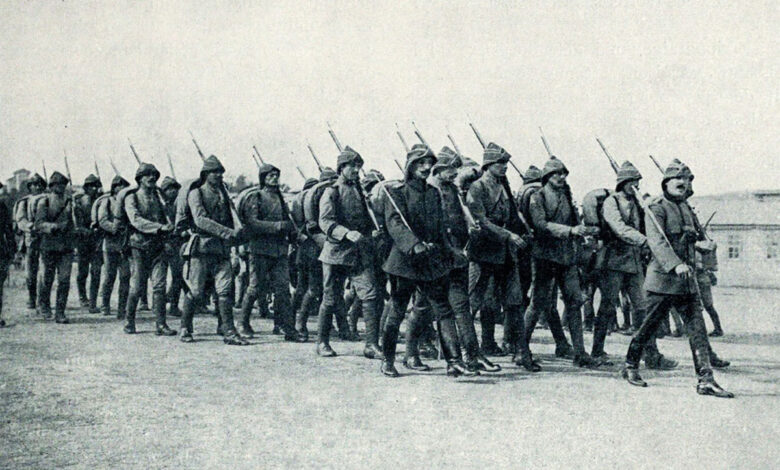
They prevailed over the Byzantines at Manzikert in 1071 in what amounted to a battle of annihilation. This victory firmly established the Gazi Warriors of Osman as world-class fighters and enabled the Ottomans to conquer Anatolia. But recognizing the difficulties of a semi-disciplined nomadic army the Ottoman dynasty gradually created a standing army which incorporated many aspects of their Byzantine opponent.
It is an honor to be invited to review Ottoman and Turkish history and to briefly present my thoughts on its progression from 1300 to the present day.
The periods I present and my assessments about their meaning and impact are how I organize my thinking about Ottoman and Turkish military history as “connecting files” rather than a strictly defined historical narrative. We know, of course, that the modern Turkish Republic is not the Ottoman Empire, but it is fair to say the Turkish armed forces carry forward the traditions and aspirations of its predecessor.
I would highlight that resiliency, innovation, and dynamic leadership have been continuing signatures of the Ottoman and Turkish military systems throughout the last one thousand years.
FOUNDATIONS 1300-1451
The Turcoman warriors who swept from the Altay Hills of central Asia were a part of the steppe-nomadic military tradition of horsemen armed with composite bows. They prevailed over the Byzantines at Manzikert in 1071 in what amounted to a battle of annihilation. This victory firmly established the Gazi Warriors of Osman as world-class fighters and enabled the Ottomans to conquer Anatolia. But recognizing the difficulties of a semi-disciplined nomadic army the Ottoman dynasty gradually created a standing army which incorporated many aspects of their Byzantine opponent.
The standing army composed light infantry corps which were created in the early 1300s as well as Sipahi light cavalry units. However, the most well-known innovation of the Osmanli military was the formation of slave-based Kapıkulu Ocakları, which transformed into the world-famous and feared Janissaries (Yeniçeriler). The Janissaries provided the backbone of the Ottoman military system until the end of the eighteenth century and may be characterized as a fighting elite. Crossing into the Europe the Ottomans won victory after victory although some, like Kosovo in 1389, were exceptionally costly. As the army moved into the fourteenth century it acquired artillery, and forward-thinking sultans embraced the Era of Gunpowder armies. The second battle of Kosovo in 1448 proved a turning point for the Ottoman army when it used up-to-date battle tactics and also integrated firearms with infantry and cavalry.
APEX PREDATOR 1451-1683
The ascension of Sultan Mehmed II to the throne in 1451 marked the beginning of what Professor Mesut Uyar has called the Classical Period in Ottoman military affairs. In 1453, the young sultan conquered Constantinople using innovative methods to move ships into the Golden Horn as well as employing the first modern siege train of heavy artillery to destroy the city’s formidable walls. Very importantly, in this period, the Ottomans created an innovative and advanced logistical system which enabled them to deploy large forces on the empire’s frontiers for extended periods of time. It also developed a more advanced system of auxiliary forces and built a system of modern fortresses. While the Classical Period ended in 1606, the Ottoman army remained the world’s dominant military machine until it reached its high water mark and defeat at the gates of Vienna in 1683. To be fair, the army was already showing signs of decline but, in many ways, the decline was relative because the European armies were catching up to the Ottomans in their organizational and technological approach to war. In this period, however, the Ottoman army proved resilient and unbeatable in combat, and it is fair to say that it was in a class by itself.
LION IN WINTER 1683-1876
So, we might ask, “how did the Ottoman military lose its preeminent position as the world’s best?” I believe that there are two principal reasons. First, the Ottomans fell behind the Europeans technologically and their weapons systems grew obsolete over time. But, more importantly, the effects of the modern Military Revolutions occurring in Europe (historians agree today that there were five Military Revolutions) doomed Ottoman efforts. In the First Military Revolution, modern nation-states created financial systems which enabled a nation to bear the high costs of the creation of standing professional military forces. This led to the professionalization and standardization of the small but highly effective armies of the Age of Frederick the Great. The second Military Revolution was an outcome of the French Revolution and involved national conscription and national mobilization. The huge armies of the Age of Napoleon were the result. Finally, the third Military Revolution was the result of industrialization which enabled nation-states to mass produce modern weapons. While some sultans attempted military reforms, notably Sultan Selim III, the Ottoman state failed to recognize and embrace the Military Revolutions which were changing the balance of power in Europe on a continuing basis. How do we explain this loss of military competitiveness? There are many explanations but I believe the simplest one is that the Ottoman state was heavily bound in tradition and also bound by an institutional resistance to change. It is difficult for successful institutions (and nations) to change doing what has always worked for them. But, in particular, both the government and its people rejected European ideas as well as the rejecting the industrialization of society and the economy. This inevitably led to the empire being locked into the technologies of the seventeenth century. Over time, after losing a series of costly wars, the empire lost the Crimea, Greece, Hungary, and large parts of the Caucasus and the Balkans. Regardless of causation, by 1876, the Ottoman Empire was labeled “the Sick Man of Europe.”
RENAISSANCE 1876-1922
Something of a renaissance began with the accession of Sultan Abdülhamid II to the throne. The young sultan was very interested in the new technologies and was determined to catch up to the west. The Meijis of Japan had already begun such a process and many Ottomans, especially military officers, shared Abdülhamid’s vision. The sultan began the importation of modern weapons but, most importantly, invited a German military mission to advise the Ottoman army in its modernization efforts. While the empire still had military defeats, the adoption of German military educational methods and curriculums led to the growth of a cadre of committed young professional officers dedicated to modernization.
Out of this emerged the Young Turks, many of whom, including Mustafa Kemal, would lead the nation in its struggle for survival in the 1920s. The Ottoman army’s reform efforts were quite successful in creating military institutions that could withstand the rigors of war and defeat European opponents. The army was notably innovative and created the modern Triangular Infantry Division as well as evolving the most effective system for creating new combat-ready infantry divisions in the First World War. Although the Ottomans lost the First World War it is worth remembering that their army did not collapse or mutiny, and that it was still fighting hard at the time of the armistice. A cadre of seasoned, experienced, and brilliant leaders emerged from the ashes of disaster to lead the Nationalist armies against the invading Greeks during the War of Independence. Not only were these generals tactically and technically proficient in their combat skills but they proved brilliant in training and rebuilding the Nationalist army. Mustafa Kemal’s Great Offensive (Büyük Tarruz) in August 1922 provided the world with a lesson in modern tactics, which was that encirclement battles of annihilation were still possible. The subsequent pursuit to Izmir and the nearly total destruction of the Greek Army was model of its kind and paved the way for successful negotiations at the Treaty of Lausanne in 1923.
It is also clear that without prescient and enlightened leaders, who recognized and reacted successfully to change in the late nineteenth century and early twentieth century, modern Turkey would exist today only as the tiny rump state as envisioned by the Treaty of Sèvres.
THE ATATURK ERA 1923-1991
The importance of Mustafa Kemal Atatürk in the creation of modern Turkey is beyond doubt. His efforts to industrialize the economy and unify Turkish society provided a strong platform from which to bring the new nation into the mainstream of the global system. Importantly, Atatürk’s dictum “Peace at home, peace in the world” provided foreign policy stability for Turkey during the tempestuous inter-war years and his successor, Izmit İnönü (who was also a brilliant and skilled general) successfully kept Turkey out of the Second World War (until its very last days). This was a crucial because it enabled Turkey to compete fairly against the war-damaged economies of the post-war European powers.
Turkey joined NATO in 1952 thereby becoming an integral and important ally of the United States in the Cold War. The nation’s military and naval forces became increasingly proficient during this period. Of note, the Turkish air force, army, and navy conducted a brilliant amphibious campaign to secure northern Cyprus in 1974, which demonstrated an ability to conduct combined arms operations of the most difficult type. After the American arms embargo in 1974, the Turkish General Staff embarked on a systemic and deliberate program to encourage and assist Turkish firms to forge a domestic armaments industry. This was designed to achieve strategic autonomy by making the nation self-sufficient in the domestic production of armaments and munitions. The effort was innovatively unique among the global roster of American allies and recipients of military assistance packages.
As the Cold War advanced the Turkish armed forces became increasingly important in NATO defense planning to keep the Soviets, in the event of war, from breaking through the Turkish Straits to the Mediterranean Sea. Of note, the Turkish military became one of three NATO nations using unmanned drones – a harbinger of the future in the 1980s. Turkey also became a full partner in the deployment, and planning for employment, of NATO tactical nuclear weapons. It should also be noted that, starting in the late 1970s, the Turkish military also fought a successful domestic counterinsurgency campaign against the PKK which was largely won by the end of the century.
A SECOND RENAISSANCE 1991-PRESENT
After the collapse of the Soviet Union the Turkish armed forces participated in UN operations in Somalia in 1992, providing both troops and a commanding general. Turkish participation in NATO-led operations in Bosnia and Kosovo and EU-led operations in Albania further enhanced the skills of its military forces. Cross-border army corps-level operations in the 1990s into Iraq to destroy PKK sanctuaries, and the brilliant special operations raid in 1999 capturing PKK terrorist leader Adbullah Ocalan in Kenya, proved indisputably that the Turkish armed forces could be labeled “world class.”
A path-breaking White Paper published by the Turkish General Staff in 2000 fundamentally changed Turkish military policy from a defensive posture to a more proactive and offensively minded posture. The White Paper explicitly stated that Turkish military forces would be prepared and capable of transferring operations across borders when necessary in order to maintain a forward defense. The general staff subsequently announced defense targets which committed the military to form a Peace and Security Zone in the surrounding region when necessary. The White Paper’s changes in national defense posture startled Turkey’s NATO partners but served notice that Turkey’s military had entered the twenty-first century as a force to be considered in geo-strategic considerations.
In the new century Turkish armed forces participated in NATO operations in Afghanistan and what came to be called “the Zorlu Doctrine” entered the NATO vocabulary as an innovative counterinsurgency policy. Turkey also provided peacekeeping forces for Lebanon and provided command and control support for NATO air operations over Libya in 2011. Turkish armed forces also provided stabilization in northern Iraq through observers and forward presence as well. Throughout this period Turkey maintained its NATO commitment but transitioned its armed forces from heavy defensive forces to lighter expeditionary rapid reaction forces.
The Turkish army’s III Corps headquarters proved fully deployable by taking command of NATO operations in Afghanistan. In the wake of the Arab spring, Turkey reacted to external Daesh and PYD/PKK-related threats by deploying military forces into northern Syria and Iraq. These were instrumental in ending the Daesh domination of northern Iraq and also in protecting the southern borders from PYD/PKK threats.
Simultaneously the Turkish armed forces successfully crushed a renewed outbreak of PKK terrorism in the southeast. Although a tiny number of military members supported the attempted July 2016 coup the vast majority of military members remained steadfastly loyal to the constitutionally elected government.
It is clear that in the same way Ottoman armed forces recognized the need for change in the 1870s, and reacted to that imperative, modern Turkish armed forces have reacted to change in similarly successful ways.
CONCLUSION
So, what is there to be said about connecting Ottoman military history to modern Turkish military history or, for that matter, to contemporary Turkish armed forces operations today? I would highlight three enduring signatures which unify these threads. First, since their foundational periods, Ottoman and Turkish armed forces have proven exceptionally resilient and combat-ready, both in victory and in defeat, Second, military innovation driven by the recognition of change has been a hallmark of these forces throughout their history.
Third, dynamic and brilliant leadership has been an outstanding characteristic of Ottoman and Turkish armed forces for almost a thousand years. By any measurement this is a remarkable history which shows no signs of slowing down in the twenty-first century.

